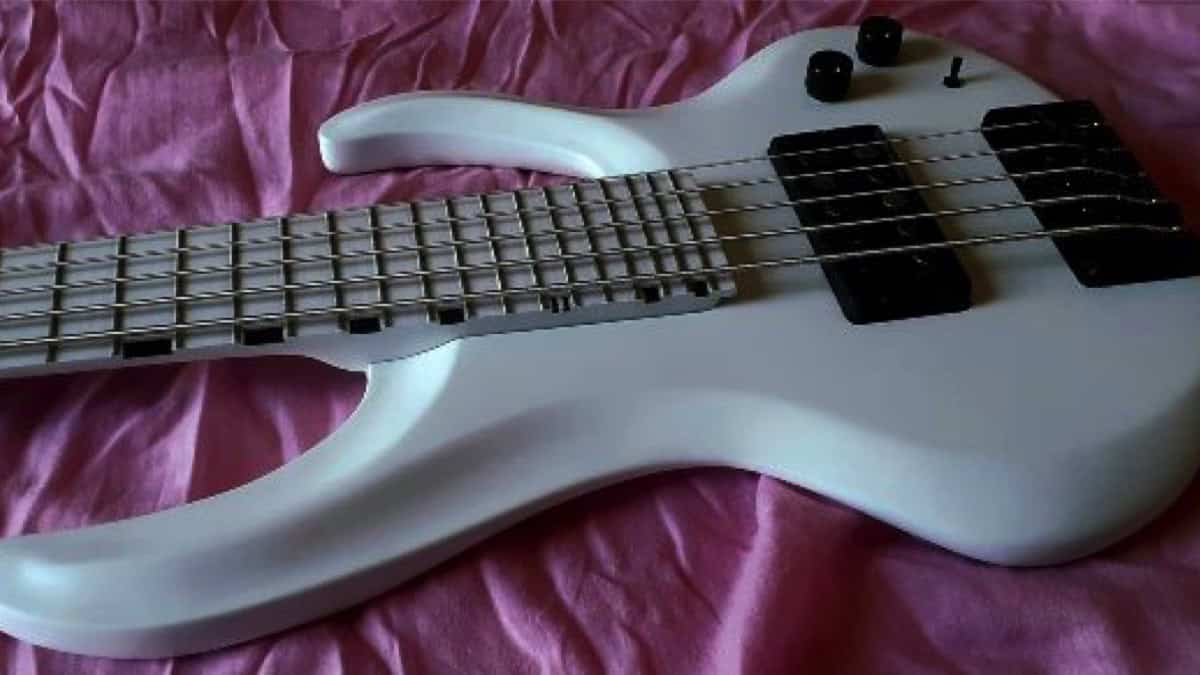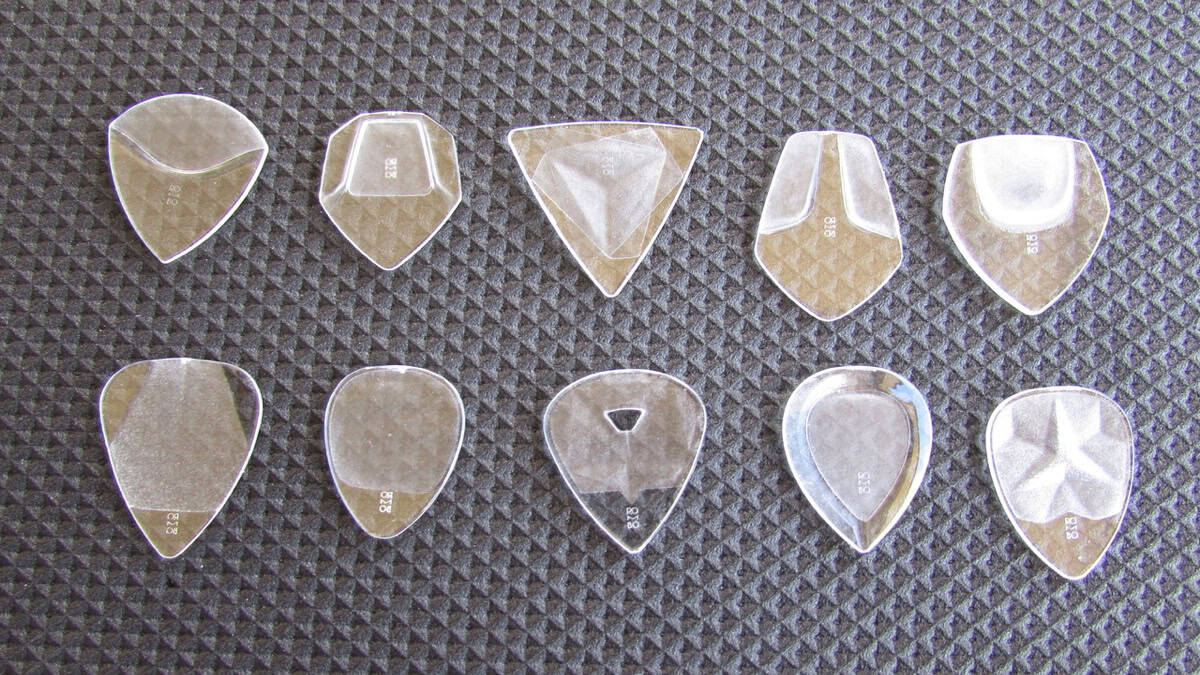Latest
The Importance Of Ear Training: Part 1
Welcome back, folks! Although Bass Musician Magazine’s assignment for me has so far been one of providing technique-related material and assignments, I would be remiss if I didn’t take a step back to spend some time talking about the importance of ear training, easily one of the most valuable skills a musician can develop. In this installment I’ll attempt to demonstrate how your technical exercises can be reassessed and reinterpreted as ear training exercises moving forward in your development as a player.
In recent years, I’ve been on a bit of a crusade to try and encourage newer players (and experienced players, for that matter) to get serious about their ear training. In my opinion, I see the greatest weakness among aspiring bass players as lying in the fact that so many play more by ‘sight’ than by ‘sound.’ In other words, too many players are relying on shapes and patterns to navigate the instrument instead of relying on their ears. Since music is an aural form of expression, it should be easy to see how this disconnect really can stifle our musical development and capacity for heartfelt expression.
Take a moment and think about what it would mean to have no limitations to your musicianship on your instrument. What would your ultimate goal be? I have spent many years contemplating this question as I have been working at improving my playing and helping other players to improve theirs. Before you can answer this question, however, you first have to establish what you consider to be the common elements that the greatest players share between them that capture our attention. In my assessment, the greatest players have always seemed to possess an overwhelmingly uninhibited sense of expression and freedom on their instruments. When you listen to a great player, you don’t hear a series of rehearsed exercises or patterns played one after the other, until they run out of ideas… Instead, you hear music come to life… It’s as if your ears are deciphering the artists’ very own spontaneous feelings and emotions in real time. There is an intangible but very real sense of connection that occurs between the player and the listener. As I see it, no contrived technical, theoretic, or academic musical component offers us any true sense of expression until it becomes ‘digested’ by the player; it’s all part of the food chain that comprises the evolution of an artist’s living, breathing musical language.
So then, if our quest is to get to a place in which we are able to play with utmost fluidity and spontaneous expression without hindrance, then we need to accomplish several things:
1. Be able to spontaneous transmit what you hear and feel to your hands and instrument without having to undergo any steps in ‘translation’ or ‘evaluation.’
2. Possess the technical facility and headroom to play what you hear in #1, above, without any stumbling or technical distraction.
3. Be in a state of mind of total comfort and freedom within the music, so that no elements of the music hit you with a sense of unfamiliarity, anxiety, or surprise. I refer to this informally as ‘being in the zone.’ Some of us have an easier time living there than others, but we should not forget that this can also be practiced and developed over time.
‘Scatting’…Gimmick, or Tactic?
Many of us have seen and heard players who can ‘scat’ while they play, or spontaneously sing the notes as they are playing them. When I first saw this done on stage by a bass player many years ago when I was just starting out, I was amazed. I thought to myself, “What an incredible display of musical prowess! That cat really knows what he’s playing!” Little did I know, however, exactly how demonstrative a skill that would become for me later.
Some of us might interpret singing while playing to be a showy demonstration, or dismiss it as mere ‘schtick’ used for entertainment value only. However, I’m here to tell you that every one of us should be exercising that same skill while we play at all times, regardless of whether we are not singing the pitches out loud or not! If you are still confused by why a tactic like this is so valuable, then ask yourself this question:
What does singing what you play demonstrate? It shows that every note you are playing has a specific purpose and place in time. Nothing is arbitrary. You played it because you HEARD it.
This point cannot possibly be overemphasized. Too many players today play the bass in an almost fidgety manner. They try to fill space with shapes that are familiar to them, but their phrases lack any real purpose or inspiration. Singing what you play really forces you to get serious about playing what you hear. I hope that you can see the benefit in devoting time to this valuable practice and performance tactic.
The Ultimate Goal
Some of you might be surprised if I made the suggestion that your bass is holding you back from becoming even more musical and expressive a player… But ask yourself this… Have you ever been inspired with really fantastic musical ideas while your bass was not in your hands? Did you happen to notice that many (or most) of them would not have normally been something you would have come up with if you were playing your bass at the time? For many of us, this is the norm and not the exception. This actually is a symptom of a larger problem: Many of us lack the true familiarity with our instrument that would allow us to accurately play what we might be inspired to hear. To get to the solution, we have to work hard at making the unfamiliar familiar. Most musical challenges we face are not as much an issue of difficulty as they are an issue of familiarity. Subsequently, this should be your ultimate goal:
Be able to play what you spontaneously hear and feel, at any time and in any musical context, with honesty, accuracy, assertiveness, and technical facility.
In order to accomplish this, we have to be always be in the mindset of pursuing true mastery of our instrument. Successful ear training can help us to get closer to that goal much sooner.
Check back next issue for learning how to put this into practice!
Gear News
New Gear: Alberto Rigoni Signature Bass, the VPR5 by Gaetano Costanzo!

Alberto Rigoni Signature Bass, the VPR5 by Gaetano Costanzo!
Internationally renowned bassist ALBERTO RIGONI (soloist, BAD AS, Vivaldi Metal Project, TwinSpirits, etc.) is proud to announce the release of his signature bass VPR5 made by renowned Italian luthier Gaetano Costanzo!
The bass is entirely handmade in Italy, without the use of CNC or other machinery, and has rather special features. The VPR is a 5-string bass (but also available as a 4-string) with 30 frets, Seymour Duncan pickups, Music Man Alnico style, passive electronics (volume, tone and a switch to select series/parallel/single-coil mode), alder body, and American maple neck and fingerboard. Gotoh tuners that ensure perfect intonation. The bass is totally painted white (nitro finish) but other colors can be requested. The VPR has a weight of about 2.9 kg and suitable for any genre.
For more information contact Gaetanobass77@gmail.com or visit online at www.instagram.com/gaetanocostanzoluthier or www.facebook.com/GaetanoCostanzoLuthier
Bass Videos
Interview With Bassist Graham Stanush

Bassist Graham Stanush…
Return to Dust is keeping Grunge alive and well! They have a new self-titled album that went out on May 3rd, 2024 and will be super busy promoting this project in the near future.
Graham Stanush is the bass powerhouse driving their sound and adding vocals to the mix. Join me as we hear all about Graham’s musical journey, details about the new album, how he gets his sound and their plans for the future.
Featured Videos:
Visit Online:
linktr.ee/returntodust
instagram.com/returntodustband/
twitter.com/Returntodustbnd
youtube.com/@returntodustband
tiktok.com/@returntodustband
Bass Videos
Review: CrystalBright Rombo Picks

CrystalBright Rombo Picks
PR SamplePlaying bass with a pick is still a touchy subject in our community. I believe you should be able to use whatever you need to get your sound. Even though I mostly play with my fingers, I like to check out innovative new picks that might have something new to offer, sonically speaking.
Judith and Carlos from Rombo recently contacted me about a new material called CrystalBright that they have been researching for the last 12 months and offered to send some prototype picks. After trying them out, I put together this video with my findings.
For more info check out @rombopicks
Latest
This Week’s Top 10 Basses on Instagram

Check out our top 10 favorite basses on Instagram this week…
Click to follow Bass Musician on Instagram @bassmusicianmag
FEATURED @sireusaofficial @ricardosguitars @gullone.bajos @godin_guitars @sandbergguitars @adamovicbasses @bassbros.uk @baumguitars @harleybentonofficial @dingwallguitars
Gear
New Joe Dart Bass From Sterling By Music Man

Sterling by Music Man introduces the Joe Dart Artist Series Bass (“Joe Dart”), named after and designed in collaboration with the celebrated Vulfpeck bassist.
Above photo credit: JORDAN THIBEAUX
This highly-anticipated model marks the debut of the Dart bass in the Sterling by Music Man lineup, paying homage to the Ernie Ball Music Man original that all funk players know and love. The bass embodies many of the original model’s distinctive features, from its iconic minimalist design to the passive electronics.

The design process prioritized reliability, playability, and accessibility at the forefront. Constructed from the timeless Sterling body, the Dart features a slightly smaller neck profile, offering a clean tone within a comfortable package. The body is crafted from soft maple wood for clarity and warmth while the natural finish emphasizes the simple yet unique look.
Engineered for straightforward performance, this passive bass features a ceramic humbucking bridge pickup and a single ‘toaster’ knob for volume control. Reliable with a classic tone, it’s perfect for playing in the pocket. The Dart is strung with the all-new Ernie Ball Stainless Steel Flatwound Electric Bass Strings for the smoothest feel and a mellow sound.

The Sterling by Music Man Joe Dart Bass is a special “Timed Edition” release, exclusively available for order on the Sterling by Music Man website for just one month. Each bass is made to order, with the window closing on May 31st and shipping starting in November. A dedicated countdown timer will indicate the remaining time for purchase on the product page. Additionally, the back of the headstock will be marked with a “2024 Crop” stamp to commemorate the harvest year for this special, one-of-a-kind release.
The Joe Dart Bass is priced at $399.99 (MAP) and can be ordered globally at https://sterlingbymusicman.com/products/joe-dart.
To learn more about Joe Dart, visit the official Vulfpeck artist site here https://www.vulfpeck.com/.














